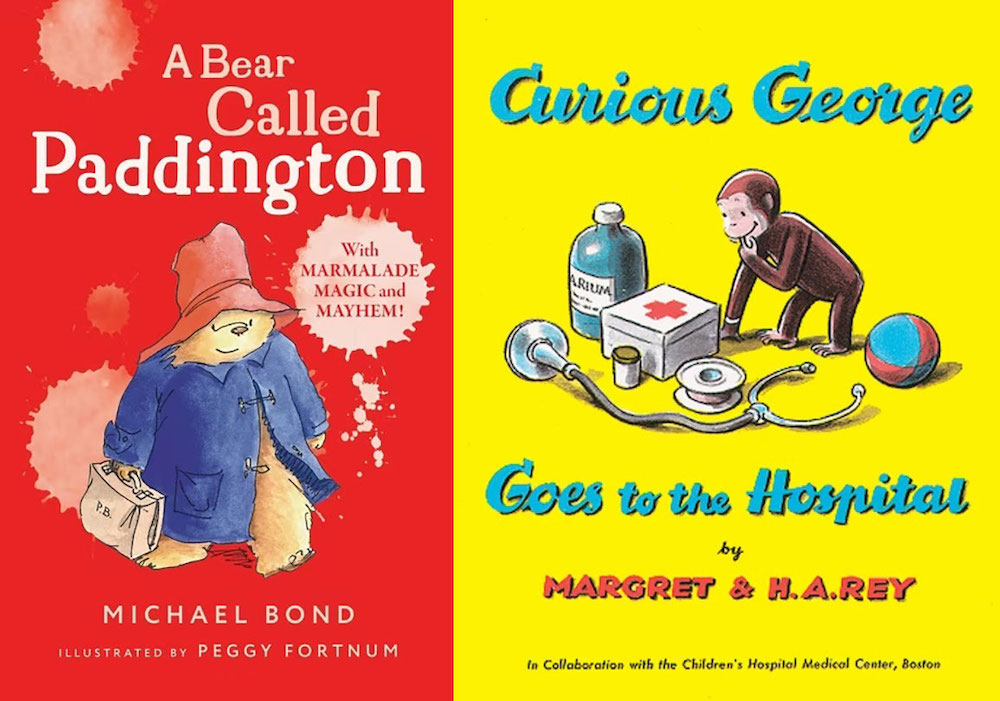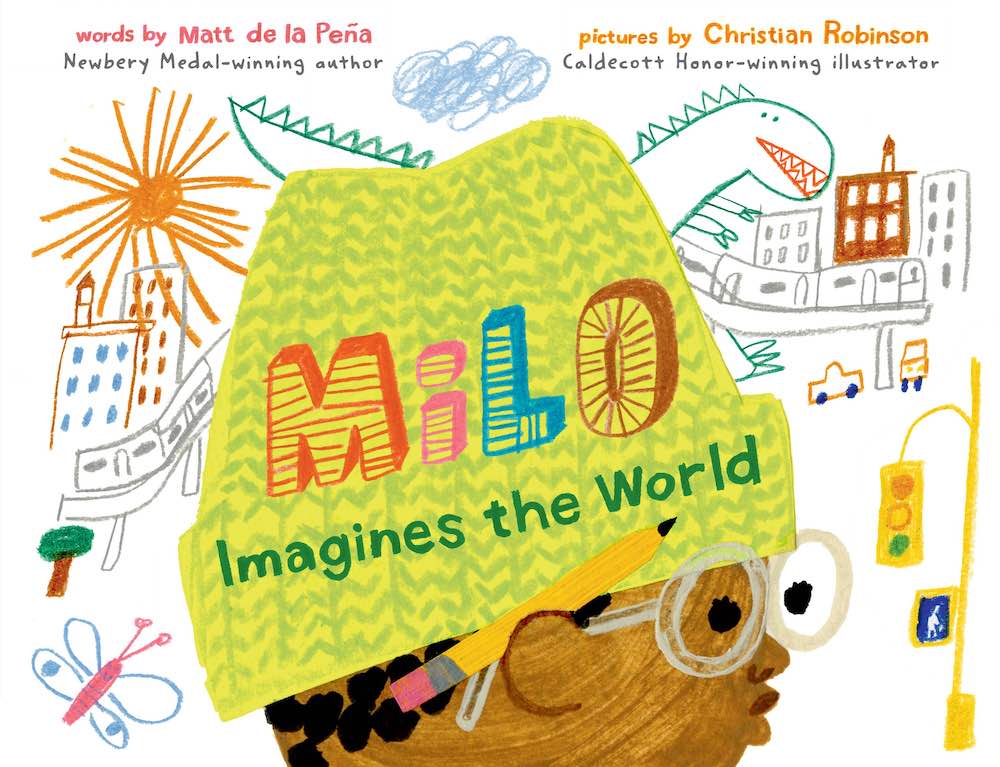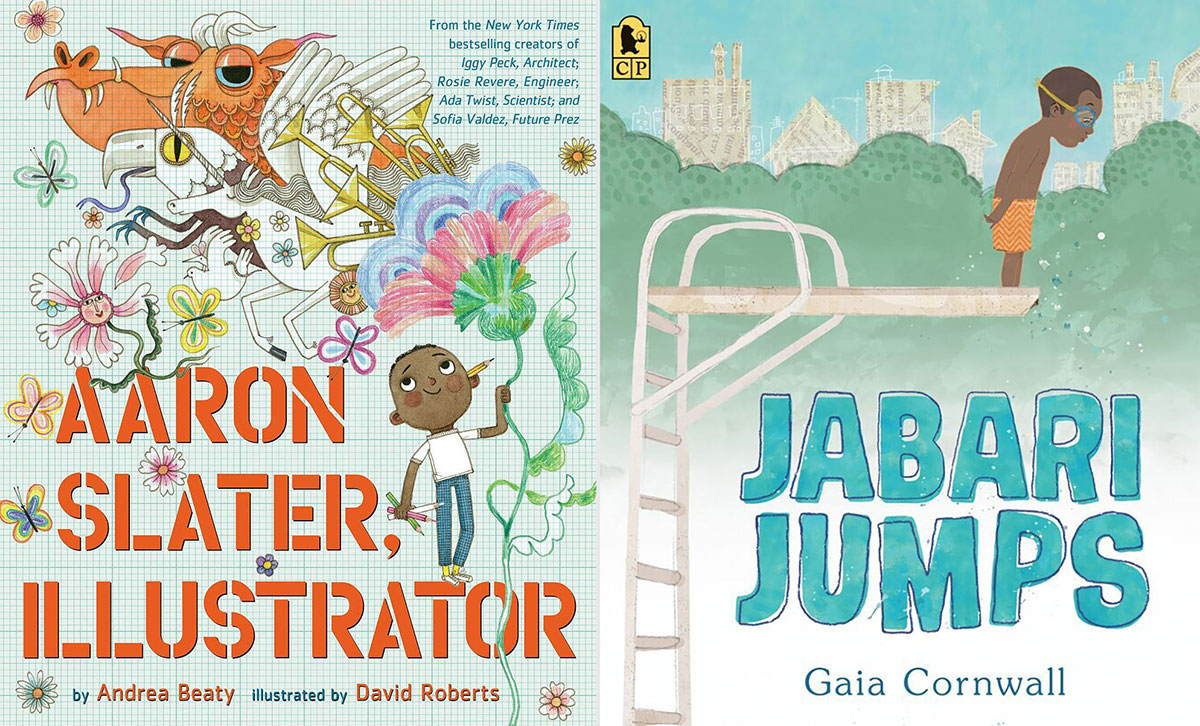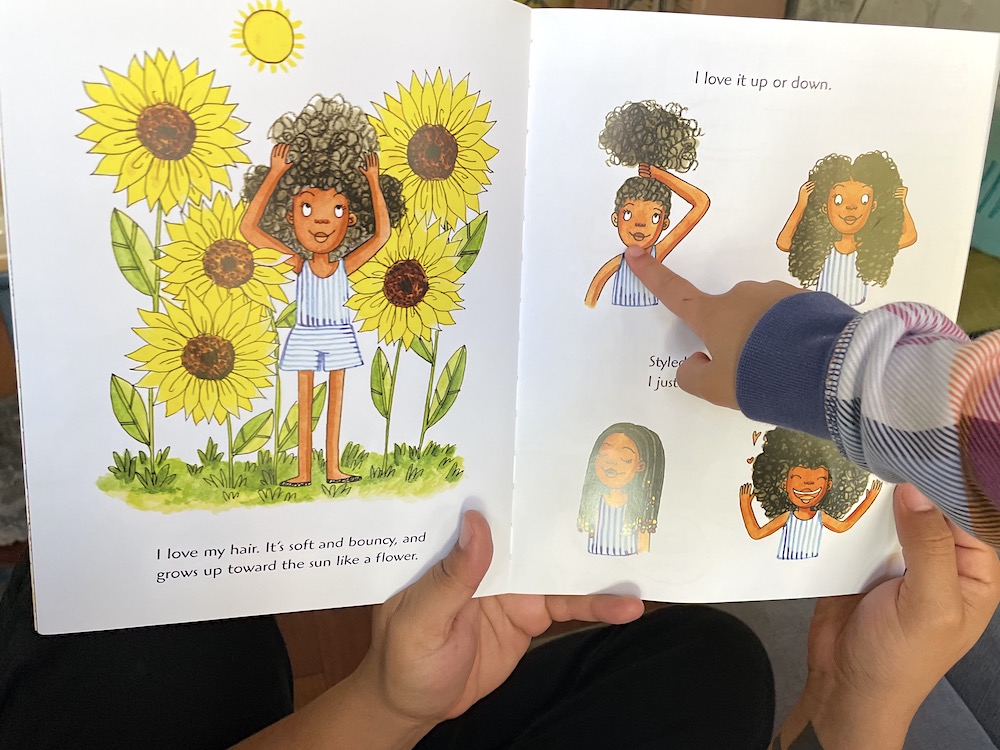[Editor’s note: The Tyee is pleased to introduce the first of an occasional series of essays on Black life in Vancouver by Harrison Mooney, the award-winning author of 2022’s 'Invisible Boy.' Check back for more of Mooney’s writing this winter.]
When my daughter turned three, she was given a book titled Don’t Touch My Hair! (2018). Written and illustrated by Sharee Miller, it’s a sweet little picture book starring a Black girl who can’t get through a single day without somebody reaching to ruffle her curls. Eventually, she snaps, shouting the titular line at an unruly mob.
“This is my hair,” she continues, on the next page. “It’s great that you love it. I love it, too. But please, just look and don’t touch without my permission.”
While I think Miller’s prior picture book, Princess Hair, might have been more my kid’s speed, I was encouraged — and frankly a little relieved — to discover the book in my house. My memoir, Invisible Boy, about growing up Black in a white adoptive family, features multiple scenes in which somebody treats my whole head like a fidget toy, grabbing at my afro like I picked it out just to entice them. Nobody told me that I just could tell them to fuck off about it, and none of the books I grew up with equipped me to deal with these microaggressions.
When I was growing up, there were very few picture books available to me that spoke to the Black experience, let alone featured Black children. It never occurred to me that this was on purpose.
“I wouldn't say, like, it's a lack of representation,” said Aisha Kiani, the founder of I Dream Library, which connects students, caregivers, educators and organizations with intersectionally diverse literature and resources. “I would say very clearly that there is a concerted effort to refuse to include certain stories.”
With few other options, I found myself identifying with anthropomorphic adoptees like Paddington Bear and Curious George. Taking an animal home to be treated like family is a popular trope in children’s literature, and while nobody ever suggested that Paddington was to the Brown family what I was to my white family, he obviously was, right down to the way that the Browns never bothered to ask if he had a name. They just centred themselves, naming Paddington after the train station where they first found him. This is just one reason that feeling a kinship with Paddington Bear was troubling in hindsight. And the less said about Curious George, whose story seems especially problematic when assessed through a post-colonial lens, the better.

There was one picture book, however, that seemed to be written with me in mind: Ezra Jack Keats’ The Snowy Day (1962). It’s a proper children’s literature classic, and rightly so, since it’s downright adorable, but a large part of what sets this Caldecott Medal winner apart is that Peter, the bundled-up boy on the cover, is Black.

Considered the first picture book with a Black child as hero, The Snowy Day resonated with me in a different way. It made me feel seen, and acknowledged, and normal, even if I didn’t have the language to express that at the time.
I never forgot what that little book did for me. Thirty years later, when my publisher asked what I wanted the cover of my memoir to look like, I sent the designers the best part of the best book by literature’s best Keats, by far: Peter making snow angels, all by himself.
My children, of course, find The Snowy Day dreadfully boring. This is because they’ve got options.
“I think the beautiful thing about what's going on today is that we don't have that monolithic kind of representation that existed before,” said Elaine Su, an elementary school teacher and librarian in the New Westminster school district who specializes in matching children and families with books that reflect their identities.
“Like, you're talking about The Snowy Day.... Many of us have had one piece of representation that we clung to, whether or not it was relevant, whether or not it was actually meaningful to us, whether or not we actually resonated with that character or that experience.”
Su pointed to Claudia Kishi, vice-president of the Baby-Sitters Club in Ann M. Martin’s trail-blazing series of young adult novels published between 1986 and 2000.
“[Claudia] was the only Asian I saw or read about any time in my childhood,” Su said. “I’m not anything like her. But I always felt like I had to be her. If we were ever playing Baby-Sitters Club, I had to be her. I always had to be the yellow Power Ranger. I think that the nice thing about representation today is that you can get books that are more representative of all aspects of your identity.”
Children’s literature still has a long way to go in terms of representation, but it’s made some great strides in the last five to 10 years. As a kid, I’d have killed for a book that exalted Black hair. Nowadays, there are several. You’ve got Miller’s two books, and then there’s Matthew A. Cherry’s Hair Love (2019), Nancy Redd’s Bedtime Bonnet (2020), Stella’s Stellar Hair by Yesenia Moises (2021) and Shauntay Grant’s My Fade Is Fresh (2022), to name a few more recent standouts.
Books like this are doing important work in the minds of our kids, Su explained. They help them understand and appreciate a fuller spectrum of humanity than sometimes exists in mainstream pop culture, which centres on whiteness and has the problematic effect of encouraging racialized children to internalize whiteness as the measure against which they should judge themselves and their families.
Growing up, Su remembers thinking, “'This is the way to be.' [So] what is wrong with me, right? What is wrong with my family, what is wrong with the way my hair looks, what is wrong with the way my body looks? I gotta be more like this, because this is normal.”
“We're not conscious about the way we internalize that,” said Su, “but to me, that's the point of representation: to help normalize and centre different realities.”

As a father, I’ve been utterly obsessed with the relative richness of representation available nowadays, and I’ve found myself hyper-fixated on illustrators like Vashti Harrison of Hair Love, Lupita Nyong'o’s Sulwe (2019) and her recent solo outing Big (2023), and Caldecott honouree Christian Robinson, the artist behind wordless wonder Another (2019) and a much-heralded trio of Matt de la Peña collaborations: Last Stop on Market Street (2015), Carmela Full of Wishes (2018) and Milo Imagines the World (2021).
We’ve read every Christian Robinson book at the Vancouver Public Library, a deep dive that’s been mostly delightful, though my daughter wasn’t quite ready for Nina: A Story of Nina Simone (2021), Robinson’s beautiful collaboration with Traci N. Todd.
After learning about all the racism Miss Simone had to endure, and therefore what racism looked like in practice and how it might show itself in her own life, my daughter drew back and declared: "I don’t want to be Black."
It was bound to happen sooner or later. So much of the art, even children’s books, that we consume makes it clear that being Black is tough sledding sometimes.
Su sees the value in stories that are honest about the Black experience, while also acknowledging the ways that these stories can negatively affect racialized children.
“Kids need to see themselves beyond just, like, a lesson, and teaching other people trauma,” she said. “If the only representation you see of yourself is stories of trauma and stories of teaching as to why your existence is difficult, that's not representation — that is just continued trauma.”
The answer, I figured, was more books. But different books — specifically, books that say, actually, being Black is good: You So Black (2023) by Theresa tha S.O.N.G.B.I.R.D., Dear Black Child (2022) by Rama Rodaah and Jacqueline Woodson’s The Day You Begin (2018), to name a few.
These books were all beautiful correctives to the raging anti-Blackness I grew up with and my daughter expressed in a vulnerable moment. But I found them a bit too didactic, too on the nose, honestly, and my kids found them uninteresting.
“Representation is only meaningful when it gets to the kids, and when the kids see it and enjoy it and love it,” said Su. “Because otherwise what we're seeing is these books are about you — being Black as a really serious business — and then these other books are books you read for fun.”
This is where representation still has work to do.
“I think our publishing industry still has room to catch up because our funny books are still written by Mo Willems and Mac Barnett and Jon Klassen and white dudes.... Much less frequently are our Black authors allowed to just be hilarious, or Asian authors are allowed to just be hilarious,” said Su.
Fact is, my children don’t want to read books about Blackness. Not really. They want titles where kids who resemble them have fun adventures and do the things they do each day. Books like Octopus Stew (2019) by Eric Velasquez and Aaron Slater, Illustrator (2021) by Andrea Beaty resonate with my daughter, an aspiring artist and storyteller.

Gaia Cornwall’s Jabari Jumps (2017) and Jessica Love’s Julián Is a Mermaid (2018) speak to my son’s independent streak and obvious penchant for weird self-expression.
As a parent, I’m delighted by books where Black children are featured, not necessarily as Black children but as swimmers and artists and drag queens and so on and so forth — books that affirm who they are just by telling a story about kids who look like them doing something that they do, or might do in the future.
And of course, there are plenty of books coming out lately speaking to Blackness in more subtle ways — even a few that star anthropomorphic animals. Curious George remains hot trash, of course, but Wutaryoo (2022) by Nilah Magruder is right up my alley. The titular creature, an unexplained, squirrel-like thing, embarks on a journey of self-discovery that mirrors my own from beginning to end.
We finished that book before bedtime one night and I found myself crying. Why did this weird little rodent remind me of me?
Sometimes I worry that I’m overdoing it, or that the emphasis on Blackness in our family’s picture book collection is actually a bad thing. The voices of my white adoptive family rattle around in my head, even now. Shouldn’t we be striving for a post-racial mindset?
I know better than that, though, especially after everything I’ve been through.
“Everybody needs to be reading Black stories,” Kiani said. “The society that we live in today is defined by it. Our culture, our language. Our economy, our neighbourhoods, our policing practices, our judicial system... everything is organized and has its framework around race, the construct of race, and the construct of race originally was to preserve the right of ownership over Black people.... Blackness is where we begin.”
That’s about where I come down on the issue, and based on my own experiences growing up and away from my adoptive family, who refused to acknowledge any of this, I suspect that my children will come to the same conclusion eventually.
“Your child is going to have a racial reckoning,” said Su. “Their Blackness is going to be part of their identity, whether you give them the language and the tools and the joy or not.
“To me, the idea that we don't want this because we want to not be so separated is a complete erasure of that which is joyful and rich and meaningful and special, and I think that our kids get to have that,” she said.
“They deserve to have that. That is owed to them. That's their birthright. Their birthright is belonging to a community, and for some of us, that means overcoming our trauma as their parents to let them have that community that we didn't get.” ![]()
Read more: Books, Rights + Justice

















Tyee Commenting Guidelines
Comments that violate guidelines risk being deleted, and violations may result in a temporary or permanent user ban. Maintain the spirit of good conversation to stay in the discussion and be patient with moderators. Comments are reviewed regularly but not in real time.
Do:
Do not: